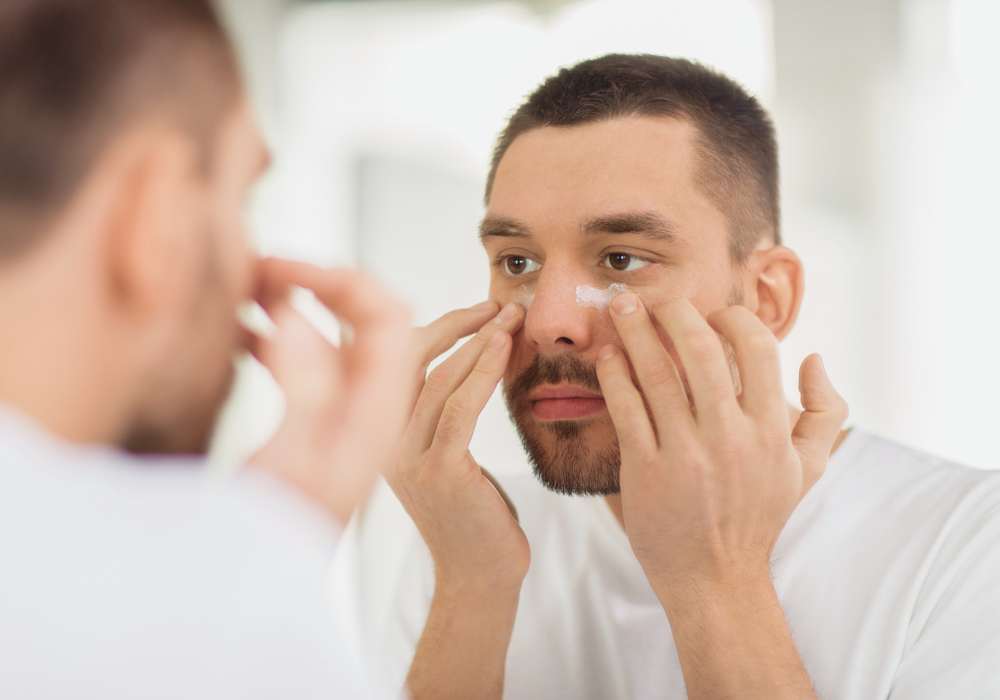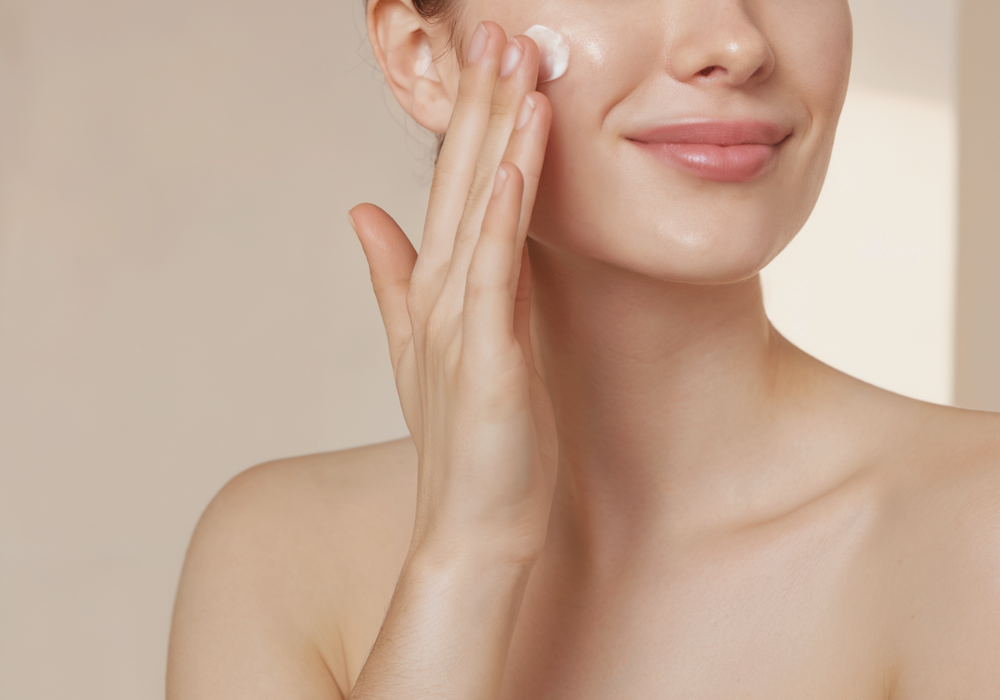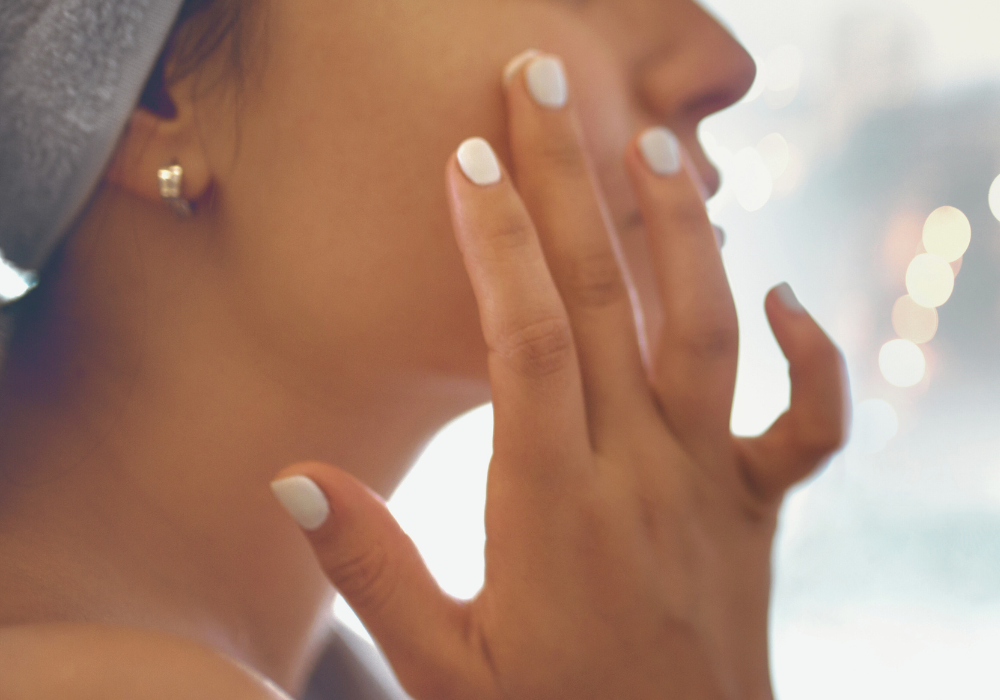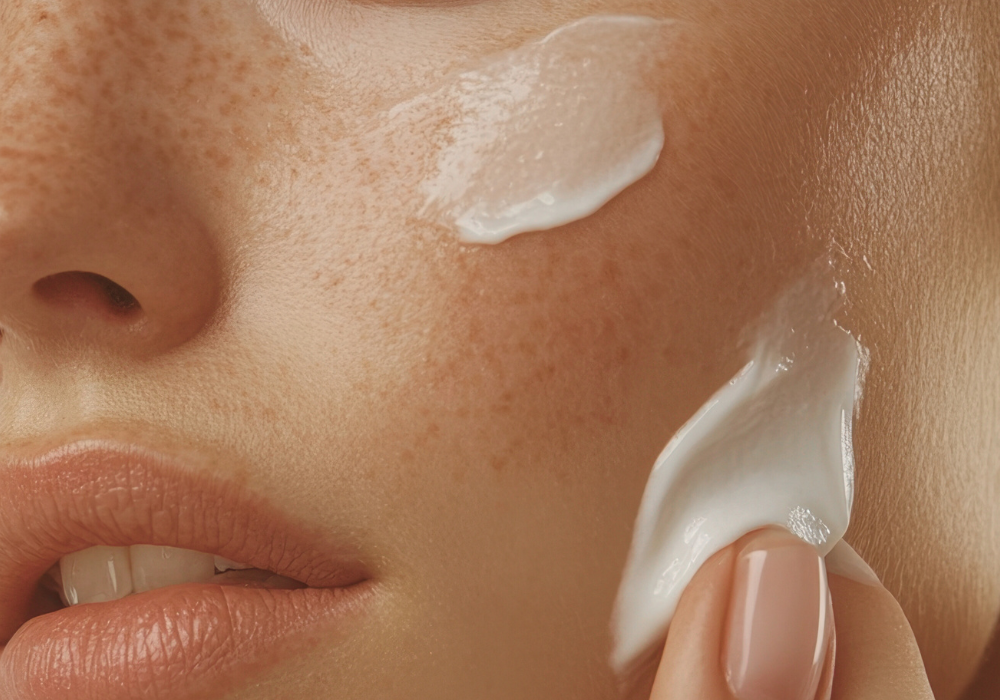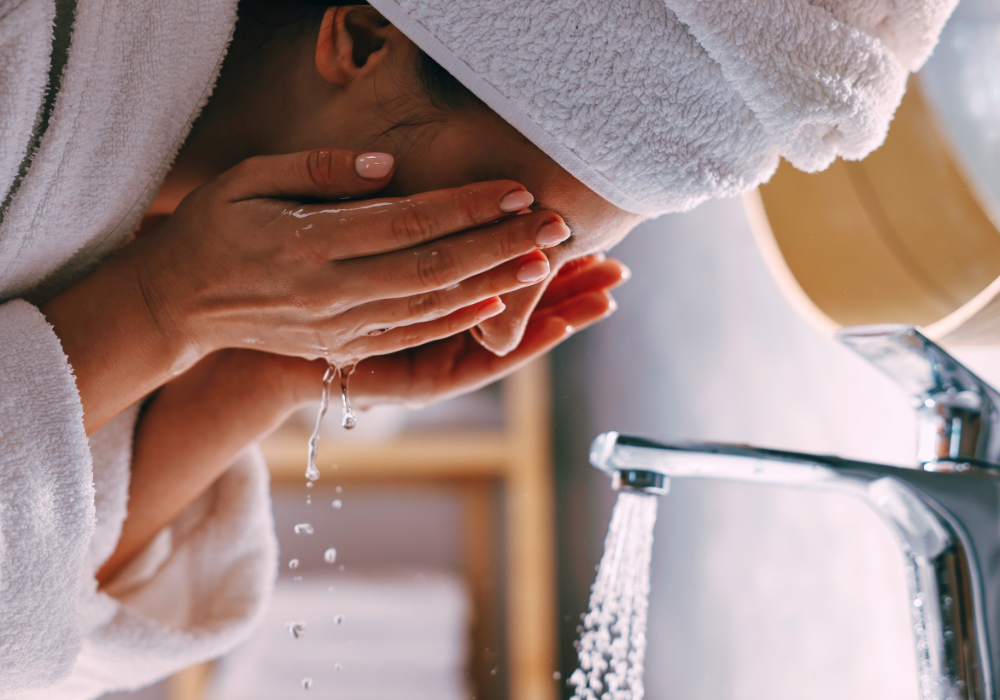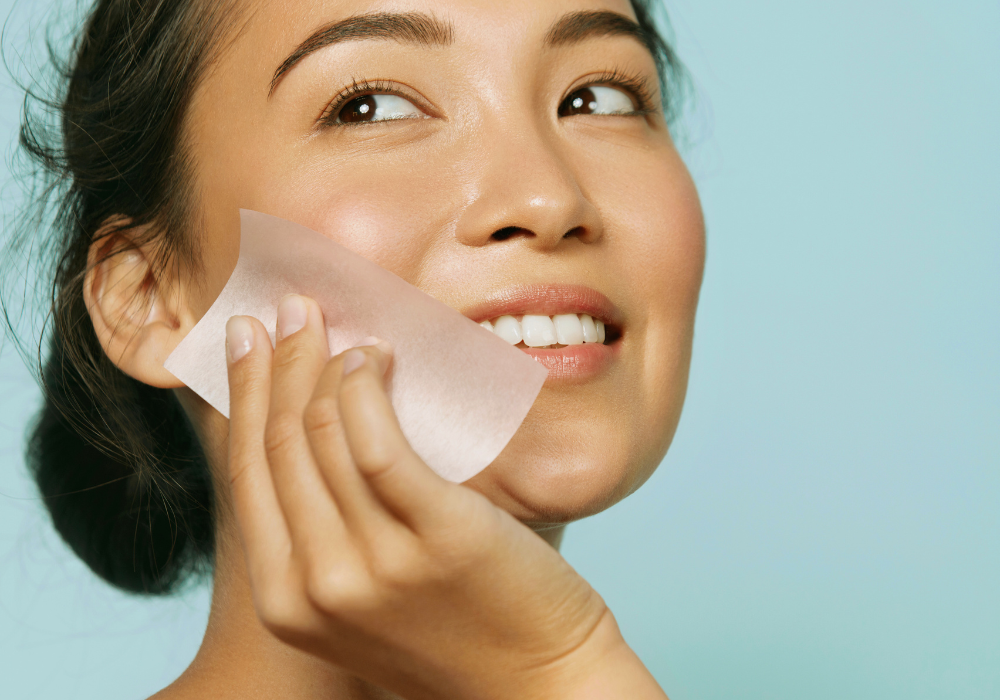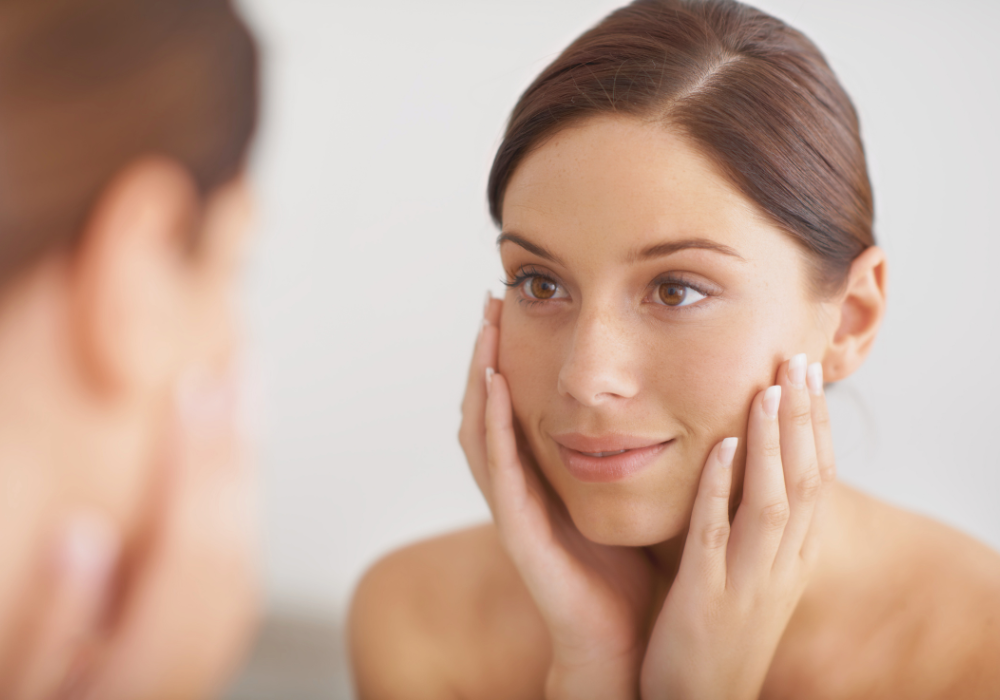Men with sensitive skin face a unique challenge: while male skin is 20% thicker than female skin and produces more sebum, testosterone actually impairs barrier function, making it paradoxically more vulnerable to irritation. The solution isn't avoiding exfoliation—it's using science-backed methods that remove dead skin cells without compromising your skin's protective barrier. A science backed exfoliating daily cleanser formulated at your skin's natural pH with gentle acid concentrations can deliver the smooth texture and reduced ingrown hairs you want while respecting your skin's sensitivity threshold.
Key Takeaways
-
50-60% of men report having some degree of sensitive skin, making gentle exfoliation approaches essential
-
Chemical exfoliants (AHAs, BHAs, PHAs) work by dissolving bonds between dead skin cells and are generally gentler than physical scrubs that can cause micro-tears
-
Nearly 60% of men experience razor bumps, which proper exfoliation can reduce by clearing trapped hair beneath the skin surface
-
Over-exfoliation is partially responsible for the "epidemic" of sensitive skin affecting over half the population
-
Exfoliation should be limited to 1-2 times weekly for sensitive skin, with improvements visible within 2-4 weeks
-
Products formulated at pH 4.5-5.5 maintain the skin's protective acid mantle and reduce irritation risk
Why Exfoliating Sensitive Skin Requires a Different Approach
Your skin naturally sheds 30,000 to 40,000 dead cells every minute, but this process slows with age and environmental factors. For men specifically, higher androgen levels mean more sebum production, allowing dead cells to accumulate more readily and potentially clog pores or create dull, rough texture.
Sensitive skin is characterized by stinging, burning, and itching sensations often triggered by cosmetics, climate changes, and skin barrier impairment. The pathophysiology involves increased permeability of the stratum corneum—your skin's outermost protective layer—leading to greater penetration of irritating substances and increased water loss.
What Makes Skin Sensitive
The skin barrier, also known as the acid mantle, maintains a slightly acidic pH level ranging from 4.5 to 5.5. This barrier consists of the stratum corneum with its protective layers composed of ceramides, fatty acids, and cholesterol. Here's the challenge for men: testosterone negatively affects barrier function, making male skin particularly more sensitive than female skin despite appearing thicker and tougher.
When this barrier is compromised through aggressive exfoliation or harsh products, the results include:
-
Increased transepidermal water loss (TEWL) leading to dehydration
-
Enhanced penetration of irritants and allergens
-
Reduced ceramide levels and skin capacitance
-
Inflammatory responses and visible redness
-
Heightened sensitivity to subsequent products
Common Exfoliation Mistakes That Cause Irritation
Most men unknowingly damage their skin through well-intentioned but misguided exfoliation practices. Traditional bar soaps can have a pH of 9-10, which strips natural oils and disrupts the acid mantle. Physical scrubs with irregular particles like crushed apricot pits create micro-tears that weaken barrier function.
Over-exfoliation represents the most widespread mistake. Personal care products caused irritant contact dermatitis in 28.8% of males in a 2021 study, with excessive frequency being a primary culprit. Your skin needs 48 hours between exfoliation sessions to repair and rebuild its protective barrier.
Chemical Exfoliants vs Physical Exfoliants for Sensitive Skin
Understanding the fundamental difference between exfoliation methods helps you select appropriate approaches that deliver results without damage.
Mechanical (Physical) Exfoliation uses tools such as brushes, sponges, or scrubs containing abrasive particles to physically remove dead skin cells. While this method provides immediate tactile feedback, it carries higher risk for sensitive skin. The abrasive action can cause micro-tears in the skin barrier, leading to inflammation and increased vulnerability to irritants.
Chemical Exfoliation uses alpha hydroxy acids (AHAs) like glycolic and lactic acid, beta hydroxy acids (BHAs) like salicylic acid, or polyhydroxy acids (PHAs) to dissolve the bonds between dead skin cells without scrubbing. For sensitive skin types, chemical exfoliants tend to be less harsh than physical methods because they work at a molecular level without mechanical abrasion.
Understanding AHAs, BHAs, and PHAs
Each acid type serves distinct purposes based on your skin concerns:
-
Alpha Hydroxy Acids (AHAs): Water-soluble acids derived from fruits and milk that work on the skin's surface. Glycolic acid, with the smallest molecular size, penetrates deeply and can show improvements in texture within 2-4 weeks. Lactic acid offers gentler action. Mandelic acid, with larger molecules, provides the mildest AHA option for sensitive skin.
-
Beta Hydroxy Acids (BHAs): Oil-soluble acids like salicylic acid that penetrate into pores, making them effective for men with oily skin or those prone to ingrown hairs. BHAs refine skin texture and remove debris from within follicles.
-
Polyhydroxy Acids (PHAs): Next-generation acids like gluconolactone with larger molecular structures that work only on the surface layer. PHAs exfoliate while simultaneously hydrating the skin, making them ideal for sensitive types who need the gentlest possible chemical option.
When to Choose Chemical Over Physical
Board-certified dermatologists recommend that those with dry, sensitive or acne-prone skin prefer a washcloth and mild chemical exfoliator, as mechanical exfoliation may be too irritating. Chemical exfoliants also reduce the risk of post-inflammatory hyperpigmentation in men with darker skin tones who might develop dark spots from aggressive physical scrubbing.
A clinical study on triple acid exfoliation demonstrated statistically significant improvements in skin texture, pores, and tone after 4 weeks with zero instances of irritation—even though approximately 50% of participants had self-reported sensitive skin. This evidence supports chemical exfoliation as the superior choice for sensitive skin when properly formulated.
How to Exfoliate Face Without Triggering Redness or Breakouts
Technique matters as much as product selection. Proper application minimizes irritation risk while maximizing benefits.
Step-by-Step Face Exfoliation for Sensitive Skin
Preparation Phase:
-
Cleanse your face with lukewarm water (hot water strips natural oils)
-
Pat skin until damp, not completely dry
-
Perform a patch test on your jawline 24-48 hours before full-face application
Application Technique:
-
Dispense a nickel-sized amount into your palm
-
If using a physical exfoliant, add water and create gentle lather
-
Massage onto face and neck using circular motions for 20-30 seconds
-
Apply gentle pressure—let the product do the work, not aggressive scrubbing
-
Avoid the delicate eye area entirely
Rinse and Follow-Up:
-
Rinse thoroughly with lukewarm water
-
Pat dry with a clean towel (never rub)
-
Apply moisturizer immediately while skin is still slightly damp
-
Follow with broad-spectrum SPF 30+ if exfoliating in the morning
How Long to Leave Exfoliants On Sensitive Skin
For leave-on chemical exfoliants, start with 15-minute contact time and gradually increase to manufacturer recommendations if well-tolerated. Rinse-off exfoliating cleansers should remain on skin for 20-30 seconds maximum during initial use. Harvard dermatologists emphasize that skin needs time to adapt to active ingredients.
Monitor your skin's response carefully. Mild tingling that resolves within 1-2 minutes may be normal for some acids, but intense burning indicates the product is too strong for your sensitivity level.
Choosing the Right Exfoliate Products for Men's Sensitive Skin
Product selection determines whether you'll achieve smooth, clear skin or trigger an inflammatory response that sets you back weeks.
Key Ingredients to Look For
-
Gentle Exfoliating Acids: Start with the mildest effective concentrations. For sensitive skin, seek AHA concentrations of 5-10%, BHA around 0.4-2%, and PHAs at 1-6%. A combination of different acid types at lower individual concentrations often works better than high concentrations of a single acid.
-
Hydrating Agents: Exfoliation temporarily increases water loss, so look for products containing hyaluronic acid or sodium hyaluronate to deliver lasting hydration. These next-generation molecules can carry a positive charge, enhancing water binding even after rinsing.
-
Barrier-Supporting Ingredients: Panthenol (pro-vitamin B5) soothes skin and supports barrier function. Ceramides make up approximately 50% of the skin barrier, and products containing them help prevent the depletion that leads to inflammatory responses.
-
pH-Balanced Formulas: Products formulated at skin's natural pH (4.5-5.5) maintain the acid mantle and reduce irritation risk. Traditional cleansers with alkaline pH disrupt this protective barrier.
A science-backed approach combines gentle exfoliating acids with hydrating and soothing ingredients. Products that achieve this balance—like formulations with triple-action hydroxy acids paired with charged hyaluronic acid and panthenol—deliver effective exfoliation without the irritation typically associated with active ingredients.
Building a Men's Skincare Routine That Includes Safe Exfoliation
Exfoliation doesn't exist in isolation—it must integrate seamlessly into a protective routine that supports barrier health.
Morning Routine with Exfoliation
For men who prefer morning exfoliation:
-
Cleanse: Use your exfoliating cleanser with gentle circular motions for 20-30 seconds
-
Tone (optional): Apply alcohol-free toner if desired
-
Treat: Wait 1-2 minutes, then apply serums if using
-
Moisturize: Apply while skin is still slightly damp to lock in hydration
-
Protect: Finish with broad-spectrum SPF 30+ (non-negotiable with chemical exfoliants)
Evening Routine for Sensitive Skin
Night exfoliation avoids sun exposure concerns:
-
Remove: Cleanse to remove daily buildup first
-
Exfoliate: Apply exfoliating product 1-2 times weekly
-
Wait: Allow 15-30 minutes before layering other actives
-
Hydrate: Apply barrier-supporting moisturizer
-
Repair: Consider adding ceramide-rich night cream
How Often Should Men Exfoliate
Frequency depends on your individual tolerance and skin type. Dermatologists recommend exfoliating at most 2-3 times per week, with skin needing time to repair between sessions. For dry and sensitive skin, reduce to 1-2 times weekly during winter when skin is more vulnerable.
Start conservatively with once weekly and observe your skin's response for 2-3 weeks. Positive signs include smoother texture and reduced ingrown hairs without redness or flaking. If tolerating well, you may cautiously increase to twice weekly after 4-6 weeks.
Recognizing and Treating Skin Irritation from Over-Exfoliation
Even with careful technique, you might occasionally overdo it. Recognizing damage signs early prevents prolonged recovery periods.
Signs You've Over-Exfoliated
Your skin will signal when you've crossed the line:
-
Persistent redness lasting more than 30 minutes after application
-
Tight, uncomfortable sensation or waxlike texture
-
Increased breakouts despite good hygiene
-
Burning or stinging when applying regular products
-
Flaking, peeling, or rough patches
-
Shiny, translucent appearance indicating thinned skin
-
Small rough bumpy texture resembling rashlike irritation
60% of patients experiencing contact dermatitis from personal care products initially attribute symptoms to other causes, delaying appropriate treatment.
Recovery Steps for Irritated Skin
If over-exfoliation occurs, implement immediate damage control:
-
Stop All Exfoliation: Discontinue all chemical and physical exfoliants immediately. Avoid retinoids, benzoyl peroxide, and other actives temporarily.
-
Simplify Your Routine: Use only gentle, fragrance-free cleanser, basic moisturizer, and SPF until skin returns to baseline (typically 2-4 weeks).
-
Apply Cold Compresses: Reduce inflammation and burning with cold (not ice-cold) compresses for 5-10 minutes as needed.
-
Use Anti-Inflammatory Ingredients: Over-the-counter hydrocortisone cream can reduce redness and inflammation. Centella asiatica and niacinamide support barrier repair.
-
Moisturize Aggressively: Apply ceramide-rich moisturizers multiple times daily to support barrier reconstruction.
Most cases resolve within 1-4 weeks with proper care. If symptoms persist beyond two weeks or worsen, consult a dermatologist.
Pairing Exfoliation with Hydration for Sensitive Skin Balance
Exfoliation and hydration work synergistically—one removes barriers to moisture absorption while the other replenishes what's lost.
Why Hydration Matters After Exfoliating
Exfoliation temporarily increases transepidermal water loss by removing the protective layer of dead cells. Research on skin barrier function demonstrates that appropriate exfoliation followed by immediate moisturizing enhances the skin's ability to retain hydration and rebuild its protective barrier.
Freshly exfoliated skin is more permeable, allowing moisturizers to penetrate more deeply and work more effectively. This creates an opportunity window lasting approximately 3-5 minutes after rinsing when your skin can absorb hydrating ingredients most efficiently.
Ingredients That Restore Moisture Balance
-
Humectants: Draw water into the skin and include hyaluronic acid, glycerin, and pro-vitamin B5. These ingredients can bind up to 1,000 times their weight in water molecules.
-
Occlusives: Create a protective seal preventing water loss. Examples include squalane, shea butter, and petrolatum.
-
Emollients: Fill spaces between skin cells to smooth texture and include ceramides, fatty acids, and cholesterol that mirror the skin's natural composition.
The most effective moisturizers combine all three categories. After exfoliating, apply products containing these moisture-supporting ingredients while your skin is still slightly damp to maximize absorption and lock in hydration.
Why Kipi's Exfoliating Daily Cleanser Fits Men's Sensitive Skin Needs
For men seeking effective exfoliation without the irritation typically associated with active ingredients, formulation matters as much as technique. Kipi's approach to premium skincare simplified means combining multiple benefits into a single step without compromising on gentleness or effectiveness.
The Exfoliating Daily Cleanser addresses the unique challenge men face: needing effective exfoliation to combat thicker skin and higher sebum production while respecting the testosterone-related barrier vulnerability that makes male skin more sensitive.
-
Science-Backed Triple Acid Approach: The formula combines three types of hydroxy acids at carefully calibrated concentrations—AHA at 1%, BHA at 0.4%, and PHA at 1%—for a total of 2.4% acids. This multi-acid strategy mirrors the clinical research showing that triple acid formulations achieve significant improvements in texture, pores, and tone with zero irritation instances, even in sensitive skin populations.
-
Protective Hydration Technology: Charged hyaluronic acid at 0.1% delivers lasting hydration through engineered positive-charge molecules that enhance water binding even after rinsing. DL-Panthenol at 1% soothes skin while supporting barrier function—critical for men whose testosterone levels naturally compromise this protective layer.
-
pH-Balanced Formula: Formulated at skin's natural pH of 4.5-5.5, the cleanser maintains your acid mantle rather than disrupting it like traditional alkaline soaps. This pH-balanced approach reduces irritation risk while optimizing acid efficacy.
-
Streamlined Routine: One product delivers three core benefits—exfoliates and refines by clearing pores and smoothing texture, removes impurities by lifting excess oil and residue, and hydrates and balances by refreshing skin and restoring moisture. For men seeking simplicity without sacrificing results, this multifunctional approach eliminates the need for separate exfoliation and hydration steps.
The cleanser is gentle enough for both morning and evening use, vegan and cruelty-free, and free of sulfates and parabens. At $28.80 with subscribe and save (20% off the $36 one-time price), the 60ml TSA-approved bottle provides approximately 2 months of use—a sustainable approach to science-backed men's skincare that respects both your skin's sensitivity and your commitment to straightforward, effective routines.
Frequently Asked Questions
Can men with sensitive skin exfoliate every day?
Yes, Kipi’s Daily Exfoliator is gentle enough for everyday use. Unlike harsh scrubs or strong chemical exfoliants, Kipi’s formula is designed with mild, skin-friendly ingredients that smooth and renew the skin without causing irritation or barrier damage. Its balanced blend of exfoliating and hydrating components makes it suitable for daily use—even for sensitive skin types—leaving your complexion fresh, soft, and radiant.
What's the difference between AHA and BHA for sensitive skin?
AHAs (alpha hydroxy acids) like glycolic and lactic acid are water-soluble and work on the skin's surface to improve texture, brightness, and fine lines. BHAs (beta hydroxy acids) like salicylic acid are oil-soluble, penetrating into pores to clear debris and reduce ingrown hairs—making them particularly useful for men who shave regularly. For sensitive skin, BHAs at concentrations around 0.4-2% tend to cause less surface irritation than high-concentration AHAs because they work within pores rather than broadly across the surface. PHAs (polyhydroxy acids) offer the gentlest option with larger molecules that exfoliate only the outermost layer while simultaneously hydrating. Combination formulas using all three acid types at lower individual concentrations often deliver better results with less irritation than high concentrations of a single acid.
How do I know if I'm over-exfoliating my sensitive skin?
Warning signs appear within hours to days of over-exfoliation. Immediate indicators include persistent redness lasting more than 30 minutes, burning or stinging when applying regular products that previously caused no reaction, and tight or uncomfortable sensation. Within 24-48 hours, you may notice flaking, peeling, or rough patches; increased breakouts despite good hygiene; shiny, translucent appearance indicating thinned skin; or small rough bumps resembling a rashlike texture. If you experience any of these symptoms, stop all exfoliation immediately and simplify your routine to gentle cleanser, basic moisturizer, and SPF only. Most barrier damage resolves within 2-4 weeks with proper care, but persistent symptoms beyond two weeks warrant dermatologist consultation to prevent long-term sensitivity issues.
Should I exfoliate before or after shaving?
For sensitive skin, exfoliate the night before shaving rather than the same day to avoid cumulative irritation. Exfoliation helps prevent the ingrown hairs that nearly 60% of men experience by clearing the path for new hair growth and removing dead cells that can trap hair beneath the surface. This timing—exfoliating 12-24 hours before shaving—allows your skin's barrier to begin recovery while still providing the pore-clearing benefits that reduce razor bumps. Never exfoliate and shave on the same day, especially if using chemical exfoliants, as both processes stress the skin barrier and combining them significantly increases inflammation risk. If you shave daily, limit exfoliation to 1-2 times weekly and schedule sessions on days when you can skip or delay shaving.
What concentration of acids is safe for sensitive skin?
For men with sensitive skin, start with the lowest effective concentrations: AHAs at 5-10%, BHAs at 0.4-2%, and PHAs at 1-6%. Multi-acid formulations with lower concentrations of each acid type (like 1% AHA + 0.4% BHA + 1% PHA totaling 2.4%) often work better than high concentrations of a single acid because they target different aspects of exfoliation while minimizing individual acid irritation. Always verify that products disclose specific percentages—vague "professional-strength" claims without concentration transparency are red flags. The FDA recommends that AHA products include sun protection warnings, and concentrations above 10% should be used only under professional supervision. Start at the lower end of these ranges, perform a patch test for 48 hours, and increase concentration only after 4-6 weeks of successful tolerance if you need stronger results.
